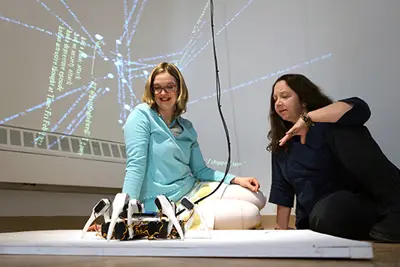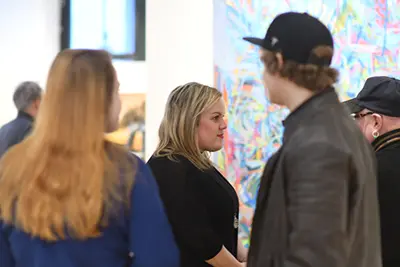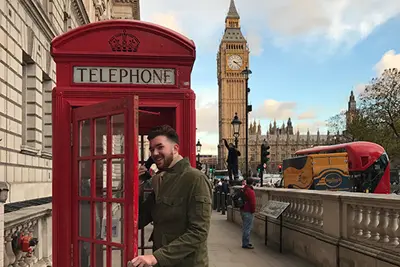Students Explore Portuguese Roots through Visual Storytelling
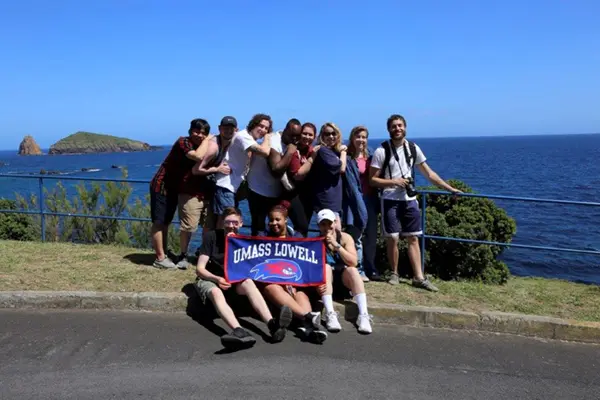 Image by Anna Isaak-Ross
Image by Anna Isaak-Ross
07/26/2019
By David Perry
For graphic design major Hayley Andrade ’20, a photography class trip to the Azores was a chance to become happily entwined in her family’s roots. Her grandfather emigrated to the U.S. from the island of Faial in the 1950s when he was 23, and she still has relatives there.
Andrade loves using images to tell a story, and having her ancestral homeland as the subject of her photos was a “surreal” experience, she says.
“I just got into photography in my sophomore year,” she says. “And I just fell in love.”
For Andrew Fournier, the course took him out of the U.S. for the first time, and that proved to be the charm for the 2019 graduate – he fell in love with The Azores’ lush green landscape and stunning mountains.
“Go back? I would love to,” says the fine arts graduate. “I couldn’t believe how beautiful it was.”
Andrade and Fournier were among 11 students who traveled with instructor Anna Isaak-Ross to the Azores for 10 days in May for a documentary image class. The course was co-taught by Isaak-Ross and Pavel Romaniko, a visiting assistant professor in Art & Design, who did not make the trip due to imminent birth of his son.
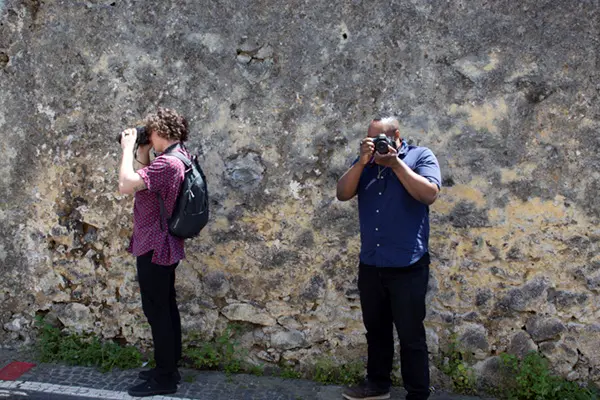
The trip to the islands, says Isaak-Ross, was “the capstone to the class,” which focused on teaching the art of visual storytelling. Students were able to use a variety of equipment – including traditional film cameras, drones and 360-degree cameras – to work on their final project, a photo book about the trip. The university’s Saab Center for Portuguese Studies offered key support, says Isaak-Ross, including local connections on the Azorean islands.
They touched down in Ponta Delgado, the capital of the island Sao Miguel.
“The people at the center helped us connect with key people everywhere we went,” says Isaak-Ross. Upon arrival, they were taken to a “huge welcome meal.”
The class met with mayors, the director of regional communities of the Azorean government, and other officials. In addition to Sao Miguel, they visited the islands of Graciosa and Terceira. “Everywhere we went, we were treated like royalty,” says Isaak-Ross.
On Terceira, they witnessed a running of the bulls. And on Graciosa, they photographed a religious procession, a working farm and oceanic splendor.
During interviews in Lowell, a woman had described in detail a place on Terceira she frequented in her youth. “The students found it, or found what they think is the location,” says Isaac-Ross.
Fournier had always wanted to travel before his graduation, “and I’m so glad this was the trip,” he says. “I wasn’t sure what it would be like, but it gave me a chance to put to use the photography skills I’d learned. We had lots of time to explore, but we thought visually the whole time, deciding what pictures to take.”

